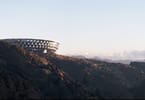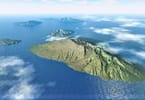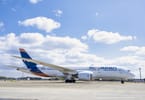In response to lower oil revenues the Omani government is set on a positive course to develop tourism infrastructure and build the country’s reputation internationally. The temperate climate, compared with other cities in the Gulf Cooperation Council (GCC), will help to make Salalah, Oman’s second largest city, an enticing tourist destination.
The country oil reserves are dwindling, leaving the government to look for other sources of income. We forecast that Oman’s known oil reserves will be completely exhausted within 20 years and output will be well below the peak levels achieved in 2004 -2008. As a result, the country is turning to its other strengths, such as highly stable political and business environments that are ideal for attracting businesses in the tourism sector. The legal system is transparent and clear and there is no history of disputes involving foreign investors.
A study by Standard Chartered Bank published in August 2009 said the Omani tourism industry showed resilience during the global slowdown and H1N1 virus (swine flu) pandemic. According to the report, the number of tourist arrivals in the first five months of 2009 rose by 17.5% year-on-year (y-o-y) and revenues rose by 3.9%.
Two new major projects, The Wave and the Muscat Hills Golf & Country Club, have greatly helped to improve Oman’s image. This has been boosted by the involvement of Swiss-Belhotel International in the construction of a four-star business hotel in a-Khuwair in Muscat. Oman plans to increase visitor numbers six-fold in order to receive 12mn visitors annually by 2020. The focus of discussion is how this can be achieved while maintaining the ‘authentic character’ of the country. Within the country there is a desire to promote tourism based on Oman’s unique culture and history, as opposed to cheap package deal holidays.
Political Risk
Oman is highly stable and benefits from a strong business environment. Sultan Qaboos is in his fortieth year in power. Generally speaking, Qaboos appears to be fairly popular and there is little evidence of opposition or dissent. Qaboos is 69 years old so this situation should continue over the coming years, although his sudden incapacitation would pose a risk. He has not publicly named a successor but his preference has reportedly been documented in a sealed letter to be opened after he dies. There is some downside risk from radicalisation within the region, particularly from neighbouring Saudi Arabia, which we regard as one of the most dangerous threats to regional security should it the country become radicalised.
Economic Risk
We expect Oman to sustain a steady if unspectacular economic recovery through 2010, building on rising oil prices, increased oil production – the big success story of Oman’s economy in 2009 – and a government countercyclical spending effort. Bolstered by an expansionary spending policy, Oman looked to mitigate the sharp drop in crude oil revenues experienced in H109 with an injection of state investment in order to underpin flagging private sector economic activity. The 13% real GDP growth of 2008 will not have been matched in 2009 but Oman should still have managed positive real GDP growth of 0.4% (an estimate we revised upwards on the back of 2008 data and the uptick in oil prices), rising to a respectable 2.5% in 2010.
Business Environment
The business environment in Oman is exemplary and will remain so as the government, aware of its own economic limitations, seeks to attract further investment flows. The Omani Tender Board has allocated tenders for contracts worth US$139.8mn in the areas of transport and energy. The largest single tender includes construction of a power plant worth US$29.4mn that will serve the Yiti region in the Muscat governorate. Other tenders include designing and construction of internal roads in the Ash Sharqiyah region at the cost of US$23.3mn. Although the Omani government’s involvement in projects is low by GCC standards – 33%, compared with an average regional figure of over 60%, according to Kuwait Finance House – we expect the public sector’s role to increase as financing remains hard to come by. This could be negative for the business environment.
WHAT TO TAKE AWAY FROM THIS ARTICLE:
- Bolstered by an expansionary spending policy, Oman looked to mitigate the sharp drop in crude oil revenues experienced in H109 with an injection of state investment in order to underpin flagging private sector economic activity.
- This has been boosted by the involvement of Swiss-Belhotel International in the construction of a four-star business hotel in a-Khuwair in Muscat.
- As a result, the country is turning to its other strengths, such as highly stable political and business environments that are ideal for attracting businesses in the tourism sector.






















